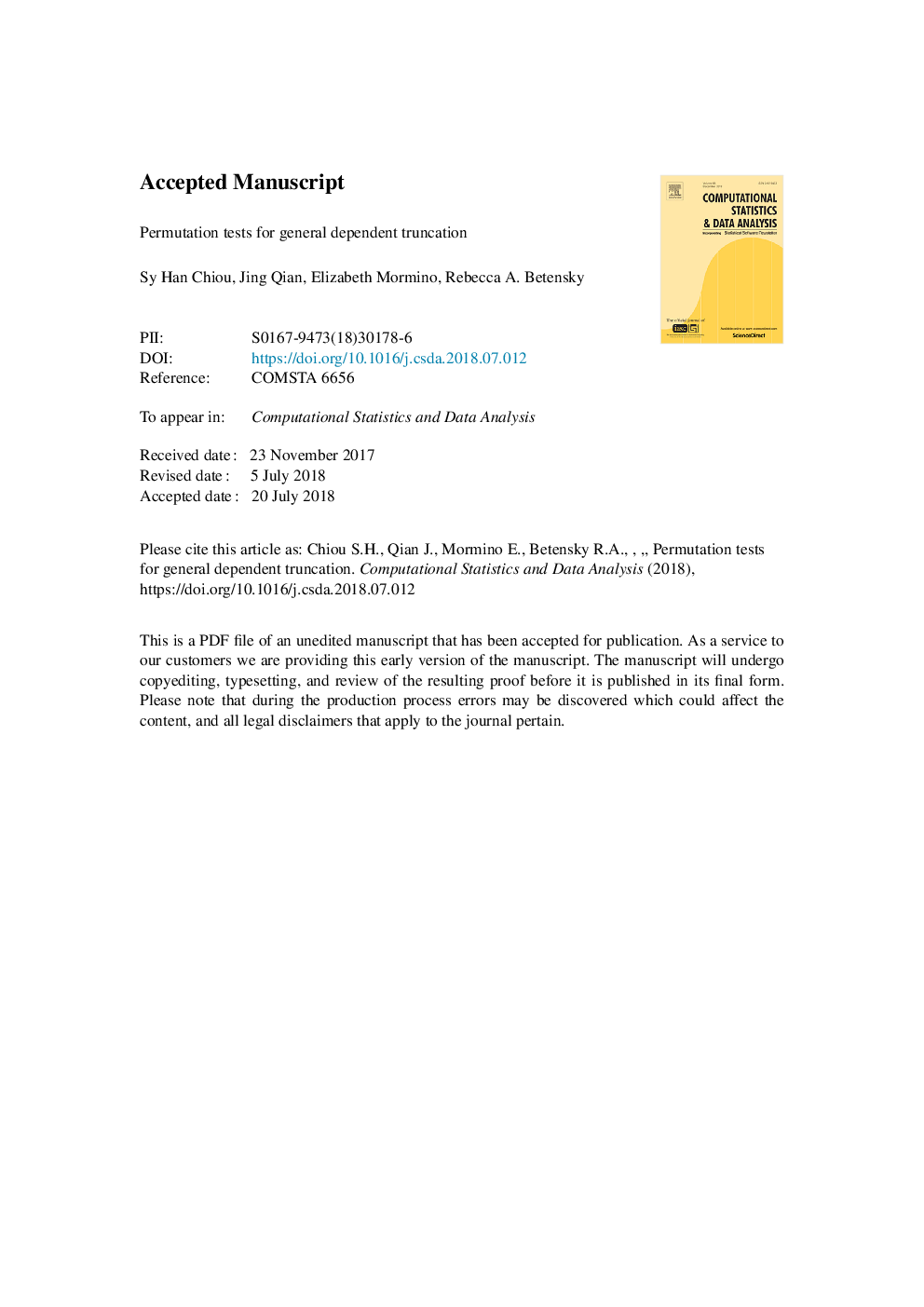| Article ID | Journal | Published Year | Pages | File Type |
|---|---|---|---|---|
| 6868613 | Computational Statistics & Data Analysis | 2018 | 29 Pages |
Abstract
Truncated survival data arise when the event time is observed only if it falls within a subject-specific region, known as the truncation set. Left-truncated data arise when there is delayed entry into a study, such that subjects are included only if their event time exceeds some other time. Quasi-independence of truncation and failure refers to factorization of their joint density in the observable region. Under quasi-independence, standard methods for survival data such as the Kaplan-Meier estimator and Cox regression can be applied after simple adjustments to the risk sets. Unlike the requisite assumption of independent censoring, quasi-independence can be tested, e.g., using a conditional Kendall's tau test. Current methods for testing for quasi-independence are powerful for monotone alternatives. Nonetheless, it is essential to detect any kind of deviation from quasi-independence so as not to report a biased Kaplan-Meier estimator or regression effect, which would arise from applying the simple risk set adjustment when dependence holds. Nonparametric, minimum p-value tests that are powerful against non-monotone alternatives are developed to offer protection against erroneous assumptions of quasi-independence. The use of conditional and unconditional methods of permutation for evaluation of the proposed tests is investigated in simulation studies. The proposed tests are applied to a study on the cognitive and functional decline in aging.
Keywords
Related Topics
Physical Sciences and Engineering
Computer Science
Computational Theory and Mathematics
Authors
Sy Han Chiou, Jing Qian, Elizabeth Mormino, Rebecca A. Betensky, Alzheimer's Disease Neuroimaging Initiative Alzheimer's Disease Neuroimaging Initiative,
